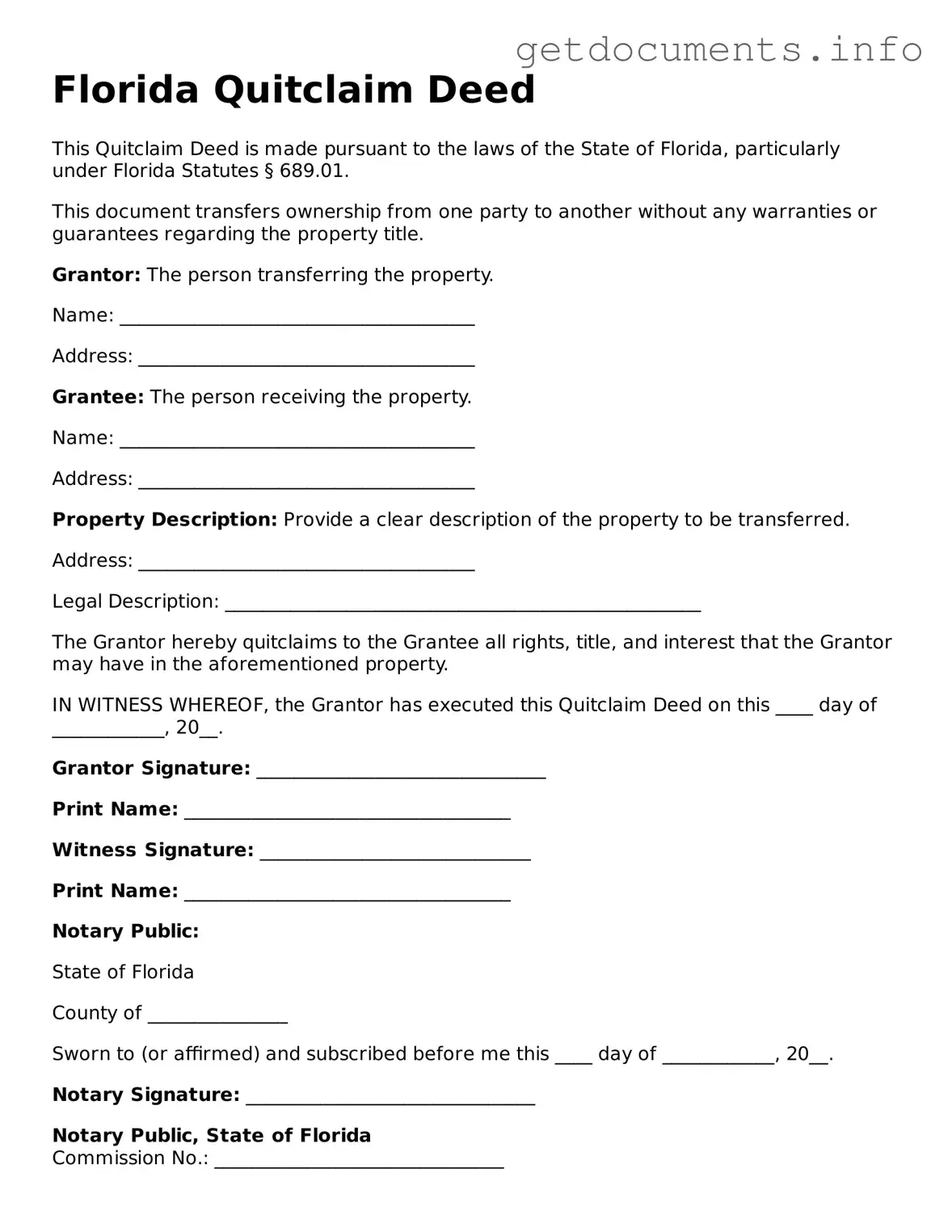The Florida Quitclaim Deed is a vital legal instrument used in real estate transactions, particularly for transferring property rights without guaranteeing the title's validity. This form allows property owners to convey their interest in a property to another party, making it a popular choice among individuals looking to simplify the transfer process. Unlike other deed types, a quitclaim deed does not provide any warranties regarding the property's condition or title; it merely transfers whatever interest the grantor has at the time of the transaction. This can be particularly useful in situations such as divorces, estate settlements, or when transferring property between family members. Understanding the nuances of the Florida Quitclaim Deed is essential, as it carries implications for both the grantor and grantee. Proper execution of this form requires adherence to specific state laws, including notarization and recording with the county clerk, to ensure that the transfer is legally recognized. As such, anyone considering using a quitclaim deed should be aware of its limitations and benefits, as well as the potential impact on future property disputes.
